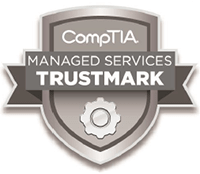 Hackers steal personal information from people who are vulnerable by making fake websites and sending phishing emails. If you fall for a phishing scam, private information like your credit card number could fall into the wrong hands. You can protect yourself from hackers in several ways, which is good news.
Hackers steal personal information from people who are vulnerable by making fake websites and sending phishing emails. If you fall for a phishing scam, private information like your credit card number could fall into the wrong hands. You can protect yourself from hackers in several ways, which is good news.
How Do Hackers Scam People?
Hackers can send phishing emails to business employees when they get their email addresses. They do this to get the workers to give out personal information. Most of the time, hackers want money and will try to get the person they are communicating with to send them their credit card number or information about their bank.
If you fall for this scam, your sensitive information is at risk, and you need to move quickly to stop identity theft.
How To Protect Yourself From Phishing Scams
Phishing is one of the most common cyber attacks impacting businesses. In a phishing email, the hacker will pretend to be a trusted person, like a bank representative or fellow employee, to trick the receiver into sending sensitive information.
Use these tips to stay safe from phishing scams.
Recognize the Signs of a Phishing Email
Phishing emails are relatively easy to detect since most of them contain the same elements. Look out for any of the following items that are common in phishing emails:
- Unusual greetings
- Messages demanding urgent action
- Content featuring many typos and grammatical errors
- Strange senders asking you for login credentials or payment information
- Unknown attachments that use files like .zip, .scr, or .exe
If you receive an email that raises your suspicion, don't click on any links or open any attachments, as they may contain malware. Report the email to an IT professional who can mitigate the threat of further cyber attacks.
Set Up Email Filters
Your spam folder may automatically fill up with suspicious phishing emails, but savvy hackers are always looking to find ways to avoid the spam filter and get their emails to your inbox. You can set up additional email filters to protect you from scams, such as blocking the sender or flagging emails with strange attachments.
Perform Regular Data Backups
Protect your data by frequently backing it up to a hard drive or cloud service. If you access your business email on your phone, it's also wise to back up your mobile data. This ensures that you can access data even if your device is compromised.
Install Security Software
Boost your protection against phishing scams by using security or antivirus software that guards against hackers and cyber security threats. Make sure that you program automatic software updates so the program actively prevents new threats that may occur.
Use Multi-Factor Authentication
One of the best ways to protect your accounts from phishing scams is by setting up multi-factor authentication for your email account and any sensitive accounts, like your login to your banking website. You'll benefit from having additional security since your account will require another form of verification besides your password. This can be a one-time verification passcode, PIN, or correct answer to a security question.



